The United States of America is the world’s most powerful country and the leading agriculture producer. In addition, the country is home to some of the world’s largest farms and state-of-the-art agribusinesses. So, if you’re looking for an agricultural business idea to start in the USA, this list is for you.
We’ve compiled 12 of the best agriculture business ideas currently trending in the American market. So, whether you’re a farmer looking to start a new agribusiness or an entrepreneur interested in the agriculture industry, this list will give you plenty of ideas to get started.
12 best agriculture business ideas in the USA
There are many types of agriculture businesses, each with its own unique set of opportunities and challenges. The best way to select the right agriculture business for you is to research each type of business carefully and thoroughly understand your area’s market conditions. Here is a list of the main categories of agriculture businesses in the USA:
Crop farming
Crop farming is one of the most common types of agriculture businesses in the USA. This business requires a large amount of land and typically includes planting, harvesting, and selling crops. Many different types of crops can be grown, so it is important to do your research and select the type of crop that will be most profitable in your area.
Livestock farming
Livestock farming is another popular agriculture business in the USA. This type of business requires land for grazing and raising animals and facilities for housing and caring for the animals. Common livestock animals include cows, pigs, sheep, and chickens. Like crop farming, selecting the type of animal most profitable in your area is important.
Aquaculture
Aquaculture is a type of agriculture that involves raising fish or other aquatic creatures in tanks or ponds. This type of business can be done on a small or large scale, making it a good option for those with limited land resources. In addition to raising fish, aquaculture businesses may
Poultry farming business in the USA
Poultry farming is raising chickens, ducks, turkeys, and other birds for meat or eggs. It can be done on a small scale, with a few birds in a backyard, or on a large commercial operation with thousands of birds. There are many ways to raise poultry, and the type of housing, diet, and husbandry practices will vary depending on the type of bird being raised and the climate in which they are raised.
For example, some birds are free-range, meaning they have access to the outdoors, while others are kept in enclosed housing. The main types of poultry farming in the United States are chicken, turkey, duck, and goose. Chicken is the most common, with over 9 billion chickens being raised yearly. Turkey is the second most common, followed by duck and goose.
Poultry farming can be very profitable, but it also comes with some risks. The most significant risk is disease outbreaks, which can lead to mass mortality and financial losses. Other hazards include bad weather conditions (which can impact feed availability and bird health) and predators (which can kill birds or steal eggs).
Cattle rearing in the USA
Cattle rearing is one of the most common agricultural businesses in the USA. It involves raising cattle for meat or milk production. There are many ways to breed cattle, and each has its own benefits and drawbacks. The most common method of cattle rearing in the USA is intensive livestock farming.
In case you missed it: Powering Agriculture with Renewable Energy in India: How to Achieve, and Sustainable Benefits
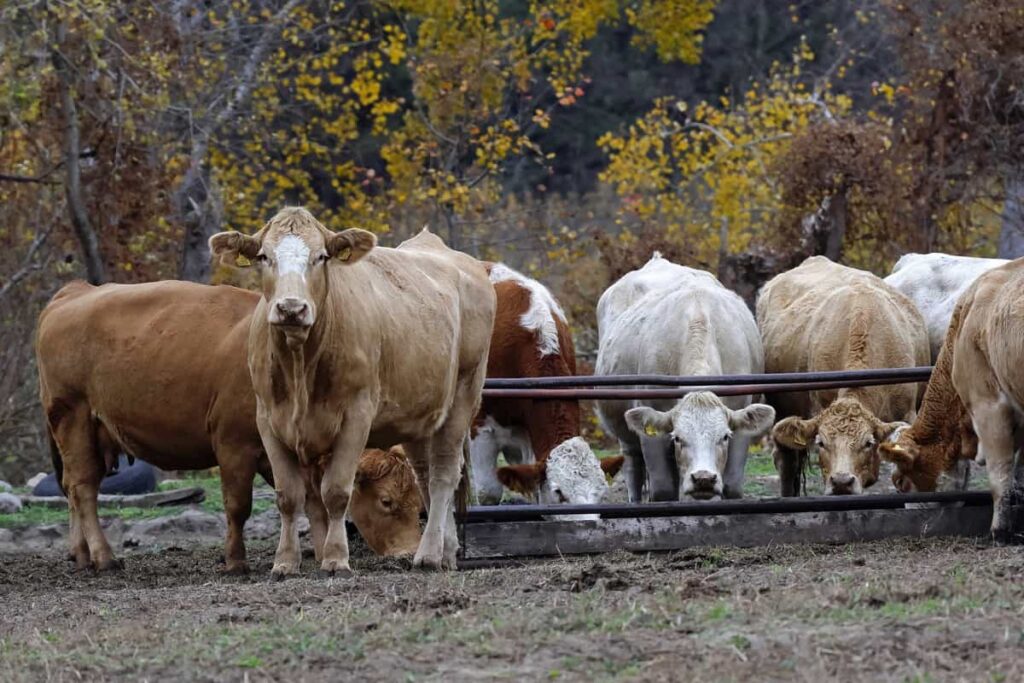
This method involves keeping the animals in small pens or stalls and providing them with a consistent diet of grain-based feed. Intensive livestock farming allows for high production levels, but it can be stressful for the animals and lead to health problems. Another common method of cattle rearing is pasture-based farming. In this system, cattle are allowed to graze on open pastureland.
This method requires more land than intensive livestock farming, but it can be less stressful for the animals and provide them with a more natural diet. Regardless of the method, all cattle farmers must provide their animals with clean water, adequate shelter, and enough space to exercise. They also need to monitor their herd for signs of illness or injury and take steps to prevent disease outbreaks.
Piggery farming in the USA
If you’re considering getting into the agriculture business, consider starting a piggery. Pigs are relatively easy to care for and reproduce quickly, so there’s potential to profit from selling pork products. However, you will need a suitable piece of land to set up your piggery, and you’ll need to build pens and shelters for the pigs. You’ll also need to be aware of the health risks associated with keeping pigs and take appropriate measures to prevent disease.
Snail farming business in the USA
Snails are surprisingly versatile and resilient, making them an excellent option for farming. They can be farmed for their meat, a delicacy in many cultures, or for their shells, which are used for crafting and jewelry. In addition, snail farming is a relatively low-maintenance endeavor, so it’s an excellent option for those looking to get into agriculture with minimal investment.
Apiculture/Beekeeping business in the USA
If you’re looking for a unique agriculture business idea, consider apiculture. Also known as beekeeping, apiculture keeps bees to produce honey and other bee products. Beekeeping is a centuries-old practice that is experiencing resurgence in popularity in recent years thanks to the growing demand for honey and other bee-derived products.
In case you missed it: Farming Business Plan PDF: for Poultry, Livestock, Agriculture, Horticulture, Greenhouse, and Hydroponic
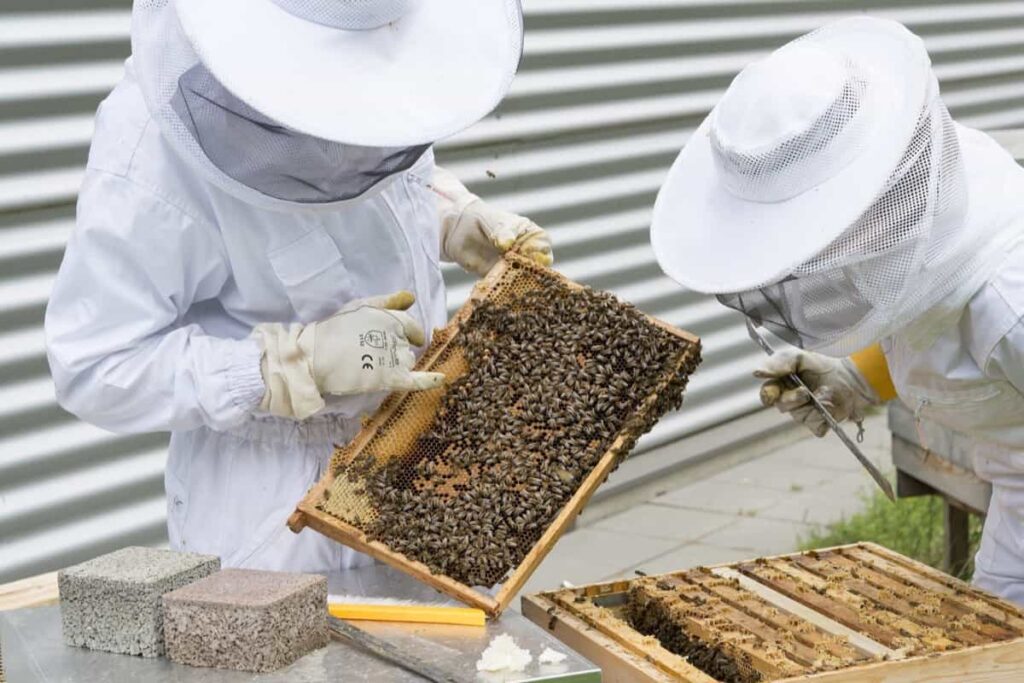
With the proper knowledge and equipment, anyone can start a small-scale apiary. And with honey being one of the most popular natural sweeteners on the market today, there’s undoubtedly a market for your products!
Horticulture in the USA
Horticulture is the art and practice of growing and production management of fruits, vegetables, flowers, herbs, or ornamental plants. It includes cultivating medicinal plants, fruits, vegetables, nuts, seeds, herbs, sprouts, mushrooms, algae, and other plant products used for food, medicine, and cosmetics. A horticulturist is someone who studies or practices horticulture.
In the United States, many colleges and universities offer degree programs in horticulture. These schools include Cornell University, Purdue University, Michigan State University, The Ohio State University (OSU), Virginia Polytechnic Institute, and State University. There are many different types of horticultural businesses that one can start.
For example, one could start a business that specializes in the cultivation of medicinal plants. Another option would be to start a business that focuses on producing fruits and vegetables for the fresh market or processing juices and other value-added products. Another possibility is to start a nursery that sells flowers and foliage plants. There are endless possibilities for those interested in starting a horticultural business.
Greenhouse farming business in the USA
Greenhouse farming in the USA has recently seen a rise as more farmers adopt sustainable and environmentally friendly practices. The greenhouse allows farmers to control the cultivation environment where their crops are grown, making it possible to produce food year-round in a protected environment. Greenhouse farming has many benefits, including reducing water usage, conserving energy, and reducing pesticide and herbicide use.
Greenhouse farming also allows farmers to control better the temperature and humidity levels in their greenhouse, which can lead to higher crop yields. In addition, greenhouse farming can help farmers extend their growing season and protect their crops from extreme weather conditions. Despite the many benefits of greenhouse farming, farmers face some challenges when adopting this type of agriculture. One of the biggest challenges is the initial investment required to build a greenhouse.
In case you missed it: Plant Growth Regulators in Agriculture and Horticulture: How to Use for Higher Yields and Benefits
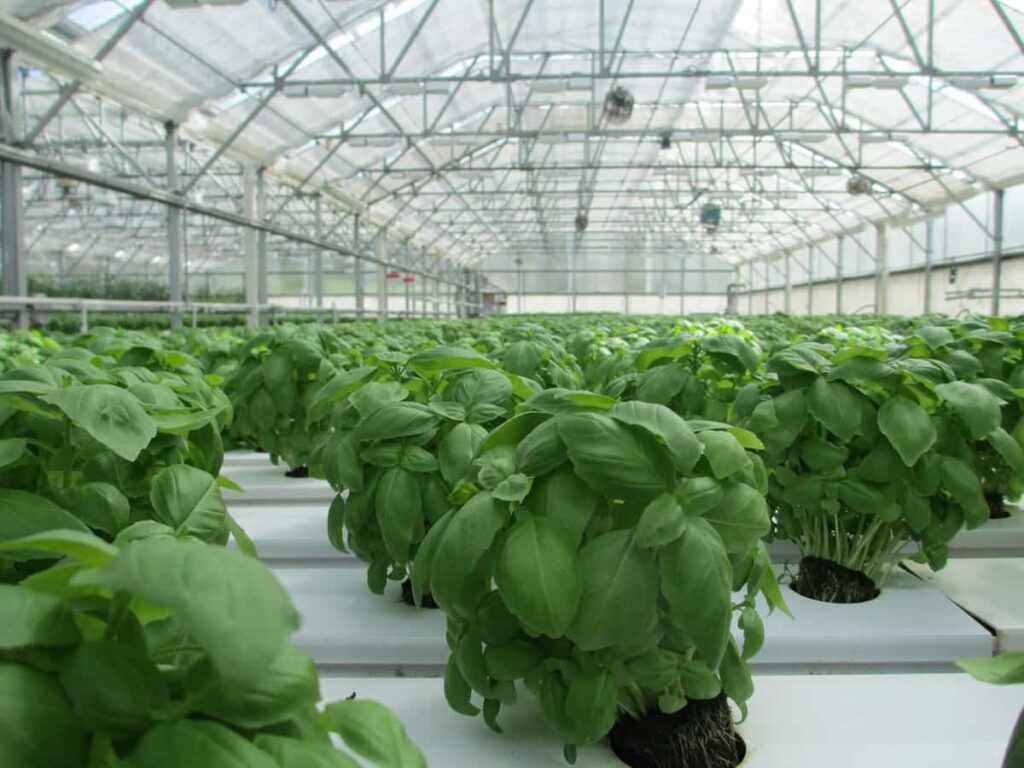
Greenhouse costs can range from a few thousand to tens of thousands of dollars, depending on the structure’s size, type, and complexity. In addition, greenhouses require regular maintenance and upkeep, which can add to the overall costs of operating a greenhouse farm. Another challenge that farmers face with greenhouse farming is pests and diseases. Because crops are grown in a protected environment, they can be more susceptible to pests and diseases than if grown outdoors.
Vertical farming in the USA
In the USA, vertical farming is becoming increasingly popular for producing food in an environmentally sustainable way. Vertical farms are typically located in urban areas, where space is limited, and use hydroponic or aeroponic systems to grow plants in vertically stacked layers. Vertical farming has many benefits, including the use of less water than traditional farming methods and that it can be done year-round regardless of weather conditions.
Additionally, vertical farming allows for a higher density of plants, which means that more food can be produced in a smaller area. However, there are a few challenges associated with vertical farming, such as the high initial investment cost and the need for skilled labor to operate the farm.
Viticulture in the USA
Viticulture is the science, production, and study of grapes. It deals with the series of events that occur in the vineyard. These events include the flowering of vines, fruit ripening, harvesting, and winemaking. The primary goal of viticulture is to produce high-quality grapes for wine production. Many factors play a role in achieving this goal, such as climate, grape variety, viticultural practices (pruning, trellising, canopy management), and yield.
Viticulturists work to control these factors to manipulate the final product. In addition to producing grapes for wine, viticulture is also concerned with conserving grapevines. This includes both native species and those that have been bred for specific traits (such as disease resistance). Grapevines are an important part of the ecosystem and provide a habitat for various animals and plants.
Floriculture in the USA
Floriculture is the cultivation of flowers. It involves the production of floral crops, including bedding plants, flowering pot plants, cut flowers, and bulbs. The USA is one of the leading countries in floriculture, with California being the top-producing state. The floriculture industry has experienced substantial growth in recent years due to increased consumer demand for fresh flowers and plants. To meet this demand, growers must produce high-quality products using effective production practices.
Many different types/varieties of flowers can be grown commercially, and each has its own requirements regarding climate, soil type, water needs, etc. The most popular types of flowers grown in the US include roses, carnations, chrysanthemums, lilies, and tulips. If you’re interested in starting a floriculture business, there are a few things you need to keep in mind:
- You’ll need to choose a niche market and focus on growing a specific type or type of flowers.
- You’ll need to develop an effective marketing strategy to reach your target customers.
- You’ll need a solid business plan to manage your finances and operations effectively.
In case you missed it: Vertical Hydroponic Farming: A Growing Trend In Urban Agriculture
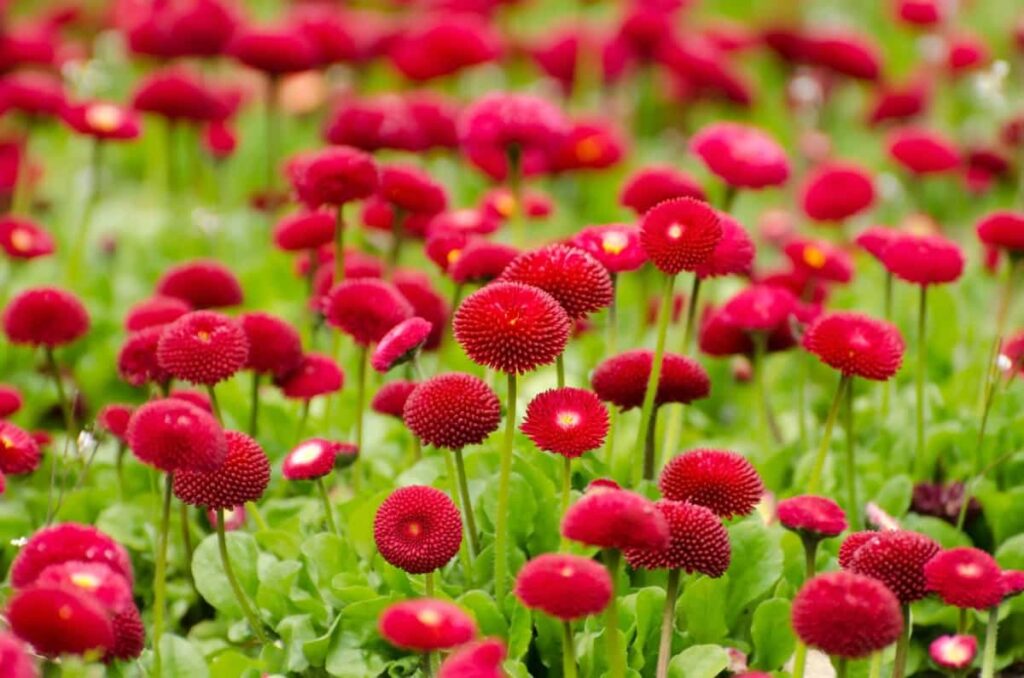
Hydroponics farming in the USA
Hydroponics is an agriculture system where plants are grown in water instead of soil. This method of farming has many benefits, including:
- Reduced water usage: hydroponics uses up to 90% less water than traditional farming methods.
- Increased crop yields: because plants grown in water have access to more nutrients than soil, they often grow faster and produce more fruit or vegetables.
- Pest and disease control: hydroponically grown plants are less susceptible to pests and diseases than those grown in soil, as the water environment makes it difficult for pests and diseases to survive.
Hydroponics is an excellent option if you’re considering starting a soil-less agricultural business in urban areas.
In case you missed it: How to Maintain the pH Levels of Hydroponic Systems: Increase, Decrease, and Stabilize
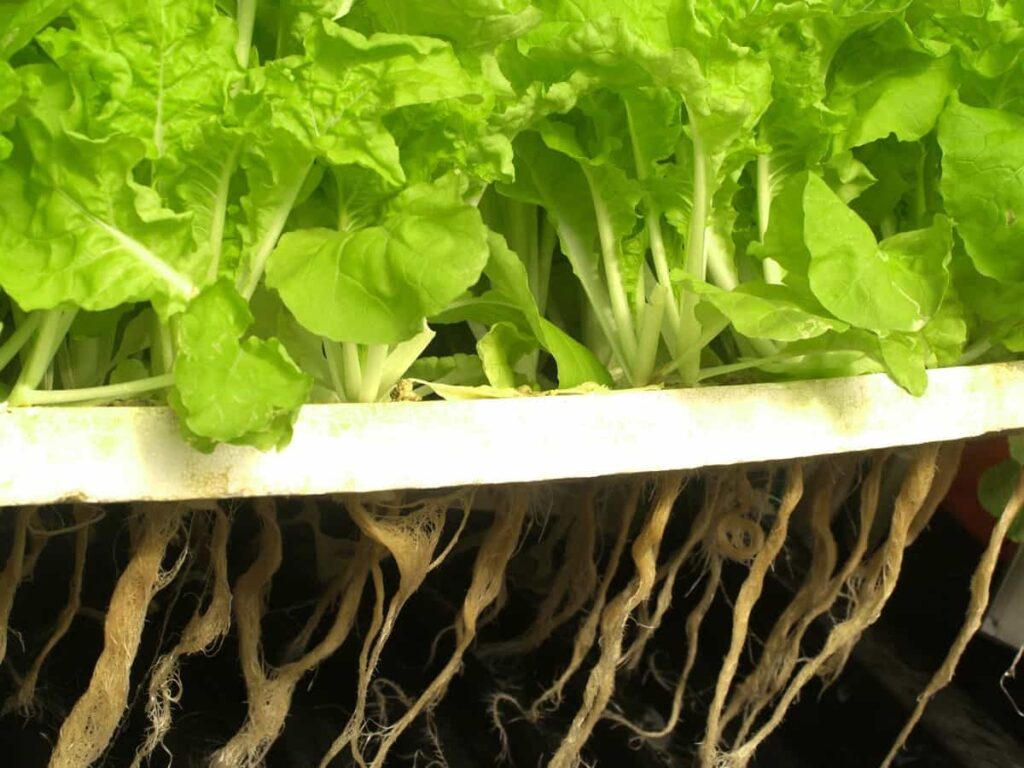
Aquaculture in the USA
Aquaculture is the cultivation of aquatic animals and plants in controlled environments. It involves farming fish, shellfish, and other aquatic organisms for food production. Aquaculture is a rapidly growing industry in the United States, with the number of farms doubling between 2005 and 2015. There are many different types of aquaculture operations, from small family farms to large commercial facilities.
The common type of aquaculture in the United States is fish farming, which accounts for about 90% of all aquaculture production. Other common aquaculture types include shrimp, oyster, and clam farming. Aquaculture offers several advantages over traditional fishing methods. It allows for more efficient use of water resources and more consistent quality and quantity of seafood products. Aquaculture also has a lower impact on the environment than traditional fishing methods, making it a more sustainable way to produce seafood.
If you’re interested in starting an aquaculture business, there are a few things you need to know. First, you should get appropriate permits and also need to find a suitable location for your farm, which must have access to freshwater sources and be large enough to support your desired operation size. Finally, you’ll need to purchase or lease the necessary equipment and supplies.
In case you missed it: Emerging Trends in Agriculture in India: A Guide to Future of the Farming

Conclusion
With proper planning and execution, starting an agriculture business can be very lucrative. Our list of the best agriculture business ideas in the USA has inspired you and helped you narrow down the kind of business you would like to start. Do your own research and create a solid business plan, invest in the best equipment and resources available, and you’ll be well on your way to success in the agriculture industry.
- Management Pests and Diseases in Your Cotton Field
- Sheep Farming Business Plan for Beginners
- Aquaponic Farming at Home: A Step-By-Step Guide
- Profitable Village Farming Business Ideas in 2024
- High-Yield Aquaculture: Fast-Growing Fish for Farming
- Effective Fish Pond Construction Techniques for Beginners
- Irrigation and Water Management in Pineapple Farming
- Blossom to Harvest: Mastering Flowering and Pollination in Papaya Farming
- Pig Fattening Essentials: From Selection to Sale for Beginners
- Raising Wagyu Cattle: A Complete Guide for Premium Beef Production
- Soil Types and Their Water Holding Capacity
- Optimizing Irrigation Schedules for Coconut Groves for Enhanced Yield
- Espresso Your Garden: Coffee Grounds for Healthier Acid-Loving Plants
- The Best Soil Mix for Snake Plants: How to Mix Your Own Snake Plant Soil
- Green Thumb Success: Expert Tips for Cultivating Greenhouse Beans All Year Round
- Bloom All Year Round: The Ultimate Guide to Indoor Hyacinth Care
- Eco-Friendly Gardening: How to Make Liquid Fertilizer from Kitchen Waste
- Ultimate Guide to Grow Anise in Pots: Explore Seed Propagation to Harvesting
- Guide to Raising Chester White Pigs: Discover Breed Facts to Growth Management
- Mastering the Elegance: The Ultimate Guide to Weeping Cherry Tree Care, Planting, and Maintenance
- Ultimate Guide to Planting Garlic in Grow Bags: Growing Strategies for Beginners
- How to Fix Spider Plant Leaf-Related Problems: Natural and Organic Remedies
- 10 Reasons Why Your Tulsi Plant is Shedding Leaves: Home Remedies and Solutions
- Optimizing Growth and Yield: The Advantages of Palm Bunch Ash Fertilizer
- Utilizing Neem Oil Extract as a Natural Pesticide for Hydrangea
- From Soil to Harvest: Various Ways in Which Farmers Can Use AI Tools
- Steps to Encourage and Induce Citrus Flowers: A Comprehensive Guide
- How to Fix Snake Plant Leaf-Related Issues: Natural and Organic Remedies
- Transform Your Garden into a Fragrant Oasis with Raat Ki Rani (Night Blooming Jasmine)
- Discover the Ideal Chicken Breeds for Philippine Farms
- How to Create a Poultry Egg Farm Business Plan for Profits
- Grow Lemon Cucumbers Like a Pro: Insider Techniques for Bountiful Yields
- Ultimate Guide to Caring for Your Pink Princess Philodendron: Tips for Thriving Variegation
- Areca Nut Profit Per Acre: Calculating Yield and Cost of Cultivation
- How Kaveri Chicken is Becoming a More Profitable Breed in Indian Backyards
- Transform Your Barn: 9 Steps to Convert a Horse Stall into a Chicken Coop
